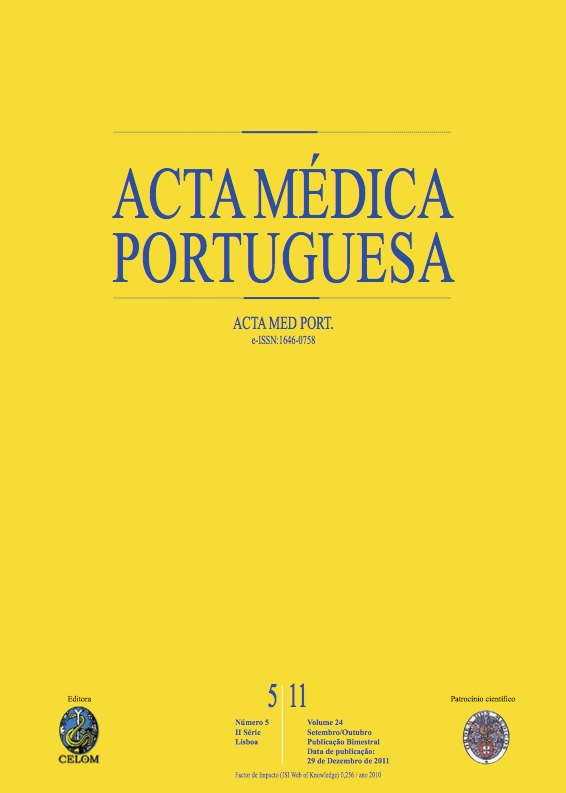Chorionicity and perinatal complications in twin pregnancy: a 10 years case series.
DOI:
https://doi.org/10.20344/amp.519Abstract
OVERVIEW AND AIMS: Multiple pregnancy accounts for about 3% of all pregnancies. The monochorionic pregnancy presents a relatively constant incidence (1:250 pregnancies) unlike the dichorionic, which is influenced by race, heredity, maternal age, parity and medically assisted procreation. The purpose of this work was to evaluate the impact of chorionicity on perinatal morbidity of twin pregnancy.Retrospective, longitudinal, descriptive and analytical study of women with twin pregnancy whose birth occurred in our maternity hospital since January/1999 until December/2008. Inclusion criteria: monochorionic and dichorionic twin pregnancies confirmed by ultrasound. Exclusion criteria: monochorionic monoamniotic gestation. Demographic data, delivery variables and perinatal morbidity and mortality were studied. Data were evaluated using the χ2 test (qualitative variables), t-Student (continuous quantitative variables) and Mann-Whitney test (quantitative discrete variables).We studied 504 pregnancies (356 dichorionic diamniotic and 148 monochorionic diamniotic). The monochorionic pregnancy had a higher incidence of threatened preterm labor (43,9% vs 31,5%, p<0,05), of oligohydramnios/hydramnios (9,8% vs 3,3%, p<0,001), discordant fetal growth (26,8% vs 14,8%, p<0,001) and intrauterine growth restriction (7,4% vs 3,7%, p<0,05). Prematurity was more common in the monochorionic group (p<0,001). The cesarean delivery rate was higher in monochorionic pregnancy (58,8% vs 50,3%, p<0,05) and the average weight of newborns was lower in monochorionic pregnancies (1983g vs 2233g, p<0,001). Newborns in the monochorionic group had higher incidence of hyaline membrane disease (5,8% vs 2,8%, p<0,05) and intraventricular haemorrhage (2,1% vs 0,4%, p<0,05). The perinatal mortality was higher in the monochorionic group (7,8% vs 1,8%, p<0,001).As the morbidity and mortality associated with monochorionic pregnancies are higher, it is essential to perform an early detection of chorionicity by ultrasound (11-13 weeks) in order to place differentiated prenatal and appropriate peripartum surveillance.Downloads
Downloads
How to Cite
Issue
Section
License
All the articles published in the AMP are open access and comply with the requirements of funding agencies or academic institutions. The AMP is governed by the terms of the Creative Commons ‘Attribution – Non-Commercial Use - (CC-BY-NC)’ license, regarding the use by third parties.
It is the author’s responsibility to obtain approval for the reproduction of figures, tables, etc. from other publications.
Upon acceptance of an article for publication, the authors will be asked to complete the ICMJE “Copyright Liability and Copyright Sharing Statement “(http://www.actamedicaportuguesa.com/info/AMP-NormasPublicacao.pdf) and the “Declaration of Potential Conflicts of Interest” (http:// www.icmje.org/conflicts-of-interest). An e-mail will be sent to the corresponding author to acknowledge receipt of the manuscript.
After publication, the authors are authorised to make their articles available in repositories of their institutions of origin, as long as they always mention where they were published and according to the Creative Commons license.









